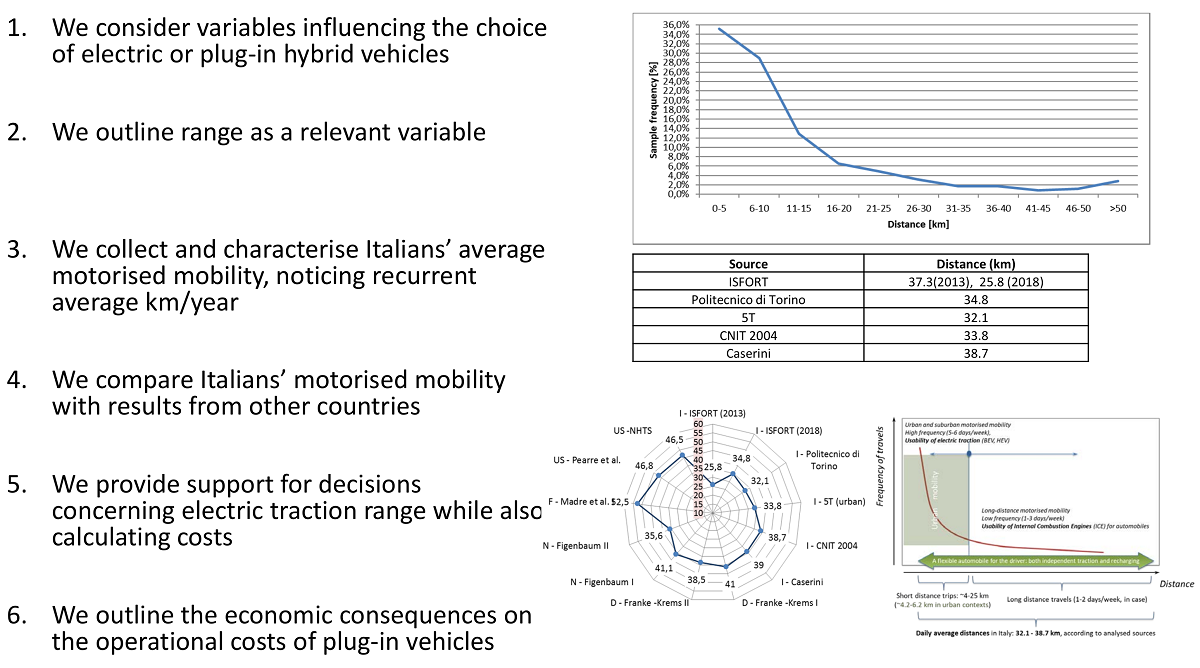This paper aims at providing a multisource data analysis, including direct data collection, focussed on daily average distances covered with motorised mobility. Its results can be used as a basis for policies involving a shift towards new propulsions, electric motors or hybrid electric vehicles (HEV) for road vehicles. A number of variables influence the propensity of drivers to acquire or use electric traction, even the option of plug-in hybrid electric vehicles (PHEV). This paper addresses one of such variable: the compliancy of electric traction regarding both hybrid plug-in solutions and full-electric vehicles, in addition to the autonomy of batteries (range), with the daily travels by road vehicles, mainly by automobiles. We want to understand whether the constraints leading towards a greater independence from crude oil rather than constraints concerning emissions, mainly in urban contexts, might be compliant with the habitual daily trips of drivers. We also want to understand if these daily trips have varied much during recent years and the consequences they may have on operational costs of plug-in automobiles. We are well aware that the average distances do not represent the actual daily runs of vehicles; yet similar distributions of daily distances for different case studies indicate that a high percentage of trips respond to certain features. After introducing a general overview of road-motorised mobility in Italy, the paper compares data from other studies to provide an indication of average daily driving distances. This reveals how different recent analyses converge on a limited range of average road distances covered daily by Italians, which is compliant with ranges allowed by electric batteries, provided that their low energy density in comparison with that of oil-derived fuels do not imply a significant increase in vehicle mass. Subsequently, average distances in some EU Countries are taken from the literature, and the results are also compared with U.S. data. The study extends the analysis of trends on the use of automobiles and road-vehicles to the international context by also addressing average daily distances covered for freight transport in some EU Countries, thereby providing a further basis for comparison and for understanding whether the daily motorised mobility can be considered as a stable phenomenon. Finally, an analysis is provided of the economic operational advantages from using plug-in vehicles. The main aim of this paper is thereafter to investigate the average daily motorised mobility of single vehicles – so not an aggregated motorised mobility as collected by some statistics – by using private motorised vehicles in Italy, with related trends; thereafter, to compare these data with those obtained from other countries, making use of both existing research studies and directly collected data; the final aim is to understand both the compliance of daily activities based on the use of automobiles with the autonomy of batteries (range) and to calculate some economic outcomes.

